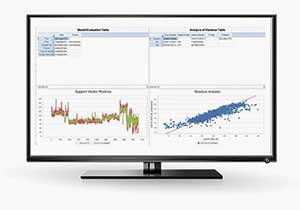

Machine learning and artificial intelligence applications in artificial lift systems have seen a growth in importance recently and are no longer a nice to have, but essential tools for design, optimisation and failure prediction. Real-time optimisation techniques that help to optimise the production, however, do not necessarily holistically consider the equipment reliability and best operating range.
Whenever a failure occurs, the reasons could be attributed to more than one condition and hence, Root Cause Analysis is often a complicated process involving visual inspection and laboratory analysis to confirm the reason for the failure. The best operating envelopes for the lift system are also at the discretion of the optimisation engineer, who may not visit often enough to account for changing operating conditions. This may lead to the system operating in a conservative fashion leading to reduced production. As an example, a rod pump might operate at a lower speed anticipating high rod stresses based on historical operation. In some instances, the systems might not be designed for the desired operating environment and may pose a threat to its reliability. There is a need for a technology which would serve as a guide to overcome these challenges using real-time diagnosis and provide foresight into future operations and potential problems that may increase operator costs.
Emerson’s predictive analysis for artificial lift using the Knowledge Net (KNet) Machine Learning Platform is an engineered solution for predicting failures or abnormal working conditions before their onset. The solution utilises historical data from the wells to build a solid offline well model, which then gets trained on the real-time data as the well comes on to production. As the lift systems are subject to many complex events that might lead to a potential failure, the principal component analysis helps in the elimination process. With a comprehensive Failure Mode Effect Analysis and Root Cause Analysis library, the solution captures, in real-time, the abnormality and translates it into a potential run time deviation. With a prior indication, the condition can be corrected or interventions planned more efficiently. The dynamic modelling of key performance indicators based on system intelligence help in driving asset performance to identify the priorities relevant to the existing conditions. This widens the scope from mere well performance to complete asset performance enhancement.
| Tel: | +27 11 451 3700 |
| Fax: | +27 451 3800 |
| Email: | [email protected] |
| www: | www.emerson.com |
| Articles: | More information and articles about Emerson Automation Solutions |

© Technews Publishing (Pty) Ltd | All Rights Reserved